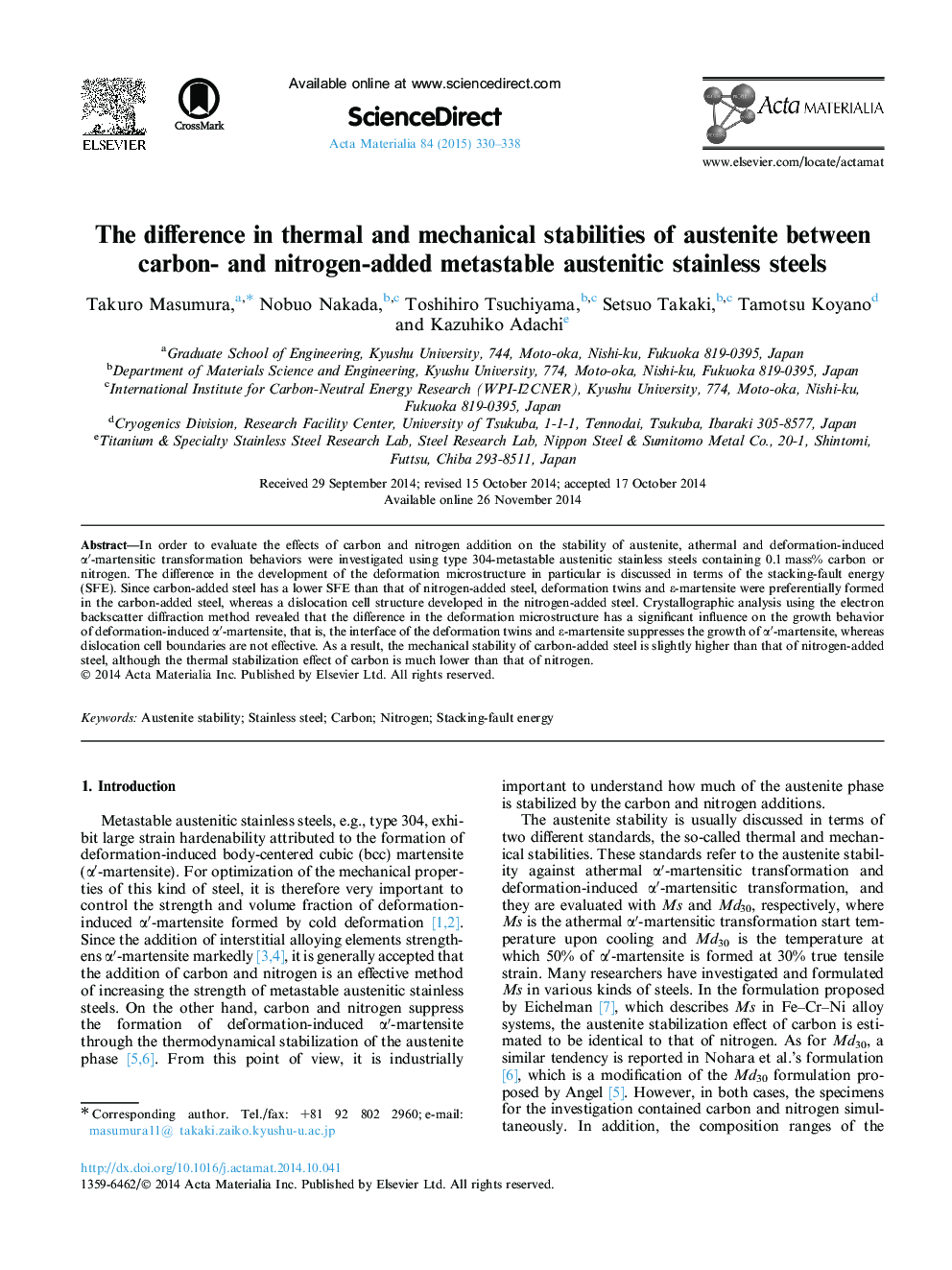| کد مقاله | کد نشریه | سال انتشار | مقاله انگلیسی | نسخه تمام متن |
|---|---|---|---|---|
| 1445440 | 1509592 | 2015 | 9 صفحه PDF | دانلود رایگان |
In order to evaluate the effects of carbon and nitrogen addition on the stability of austenite, athermal and deformation-induced α′-martensitic transformation behaviors were investigated using type 304-metastable austenitic stainless steels containing 0.1 mass% carbon or nitrogen. The difference in the development of the deformation microstructure in particular is discussed in terms of the stacking-fault energy (SFE). Since carbon-added steel has a lower SFE than that of nitrogen-added steel, deformation twins and ε-martensite were preferentially formed in the carbon-added steel, whereas a dislocation cell structure developed in the nitrogen-added steel. Crystallographic analysis using the electron backscatter diffraction method revealed that the difference in the deformation microstructure has a significant influence on the growth behavior of deformation-induced α′-martensite, that is, the interface of the deformation twins and ε-martensite suppresses the growth of α′-martensite, whereas dislocation cell boundaries are not effective. As a result, the mechanical stability of carbon-added steel is slightly higher than that of nitrogen-added steel, although the thermal stabilization effect of carbon is much lower than that of nitrogen.
Journal: Acta Materialia - Volume 84, 1 February 2015, Pages 330–338
